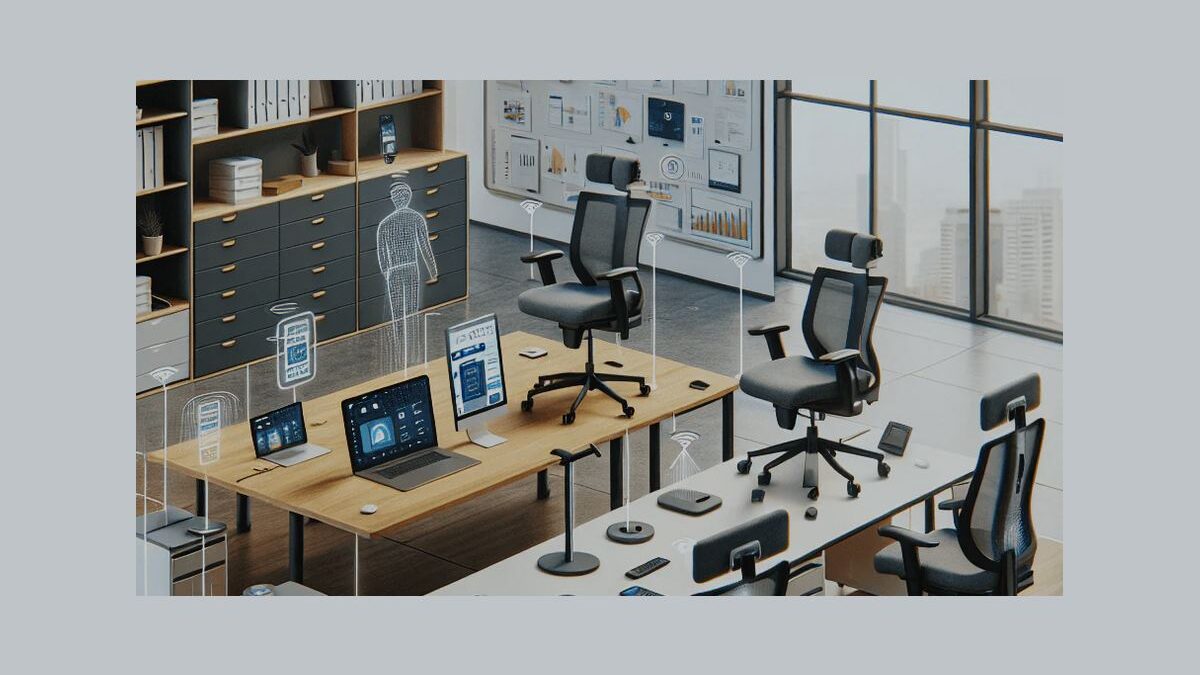Walk into a modern office and the first impression is no longer the hum of machines or the glow of monitors. It is the feeling that the room is aware of you. The chair adjusts slightly as you sit, the desk rises to the height you prefer, and the light shifts to a brightness that helps you focus. This is not a coincidence. It is designed guided by intelligence.
Now, AI has entered the world of commercial furniture, and the result is a new kind of workplace. These AI-driven environments are built to sense, learn, and respond. Instead of static arrangements, offices are turning into living systems that adapt to human behavior. What was once an inert desk or chair now acts as a silent collaborator, shaping concentration, comfort, and creativity.
Table of Contents
From Data to Design
For decades, workspace design relied on intuition and aesthetics. Today, it relies equally on data. Intelligent furniture collects subtle information. Movement patterns, posture changes, air quality, and even stress indicators and translated that knowledge into action.
Smart desks with artificial intelligence systems can remember the user’s preferred height and schedule, alternating between sitting and standing throughout the day. Chairs sense when posture weakens and adjust lumbar support to prevent fatigue. Temperature-sensitive materials maintain comfort without extra energy use. These adjustments may seem small, yet they transform the rhythm of work.
In large organizations, aggregated data helps managers understand how employees use space. Meeting zones can expand or contract based on occupancy, and lighting systems can adapt to natural daylight, reducing waste. AI has turned design into a continuous conversation between people and their surroundings.
The Science of Focus
Productivity is not just a matter of effort; it is a matter of environment. Studies consistently link comfort and ergonomics to concentration and mood. Intelligent furniture refines these factors in real time.
Picture a designer drafting ideas at an AI-enabled table. As posture shifts forward, the chair readjusts to relieve tension. The desk surface cools slightly to maintain alertness. Subtle ambient lighting fades warmer in the late afternoon to ease mental strain. The user never needs to press a button. Every element cooperates to protect focus.
These details create something essential in modern work: flow. When the environment removes small distractions, creative thinking expands naturally. AI furniture is not replacing human energy; it is supporting it.
Sustainable Intelligence
Technology and sustainability often seem at odds, yet intelligent furniture bridges that divide. Energy sensors embedded in desks and chairs monitor usage, automatically powering down idle stations. Climate-adaptive materials regulate heat and reduce dependence on central systems.
Because each component records its own condition, maintenance becomes predictive rather than reactive. A desk that senses motor strain alerts technicians before failure. This extends product life and minimizes waste. The result is a sustainable model where intelligence equals longevity.
The Human Element
Despite the data and algorithms, the real success of AI workspaces lies in empathy. Designers are using artificial intelligence not to control workers, but to understand them better.
Furniture now interprets body language to suggest micro-breaks or posture resets. Adaptive lighting responds to circadian rhythms, aligning productivity with natural energy cycles. The workplace, long seen as rigid and mechanical, becomes responsive and humane.
These subtle interactions change how people feel about work. When the environment listens, stress decreases and collaboration improves. It is not technology that inspires trust, but the comfort it quietly creates.
A New Aesthetic of Intelligence
The visual language of the AI workspace is evolving, too. Smooth curves replace hard edges, and materials blend digital precision with organic warmth. Carbon-neutral composites, recycled aluminum, and textured fabrics give intelligent furniture a tactile honesty. The future of design feels less robotic and more human.
Color palettes lean toward balance: soft neutrals with accents of calm blue or green. Lighting integrates into surfaces instead of standing apart. Every choice, from form to function, communicates serenity. It is a subtle aesthetic that mirrors the intelligence beneath it. Refined, responsive, and invisible.
The Business of Comfort
For companies, the advantage of intelligent furniture is measurable. Productivity rises when discomfort falls. Flexible workstations reduce absenteeism, and adaptive design increases retention by giving employees control over their environment.
Data gathered from AI-powered systems also supports smarter real-estate planning. Underused zones can be reconfigured, reducing costs without sacrificing space quality. In competitive industries where innovation depends on well-being, comfort has become a strategy.
Beyond the Smart Office
The same principles guiding corporate interiors are spreading to co-working hubs, universities, and home studios. The technology is scalable, allowing individuals to experience intelligent design at any level. A writer’s chair that supports posture during long hours or a studio desk that adjusts to creative workflow both belong to this expanding ecosystem.
AI furniture is teaching spaces to care. Each adjustment, no matter how subtle, tells users they are seen and supported. That emotional assurance turns functionality into trust, and trust into productivity.
The Future Feels Aware
The next stage of design will blur the line between environment and intelligence. Walls, tables, and lighting will synchronize through shared data, creating spaces that evolve with the people inside them. The workspace will not simply host creativity. It will participate in it.
Artificial intelligence is changing how we think about furniture, but more importantly, it is changing how furniture thinks about us. In the quiet cooperation between form, code, and comfort, the office becomes something entirely new: a living partner in the pursuit of human potential.

